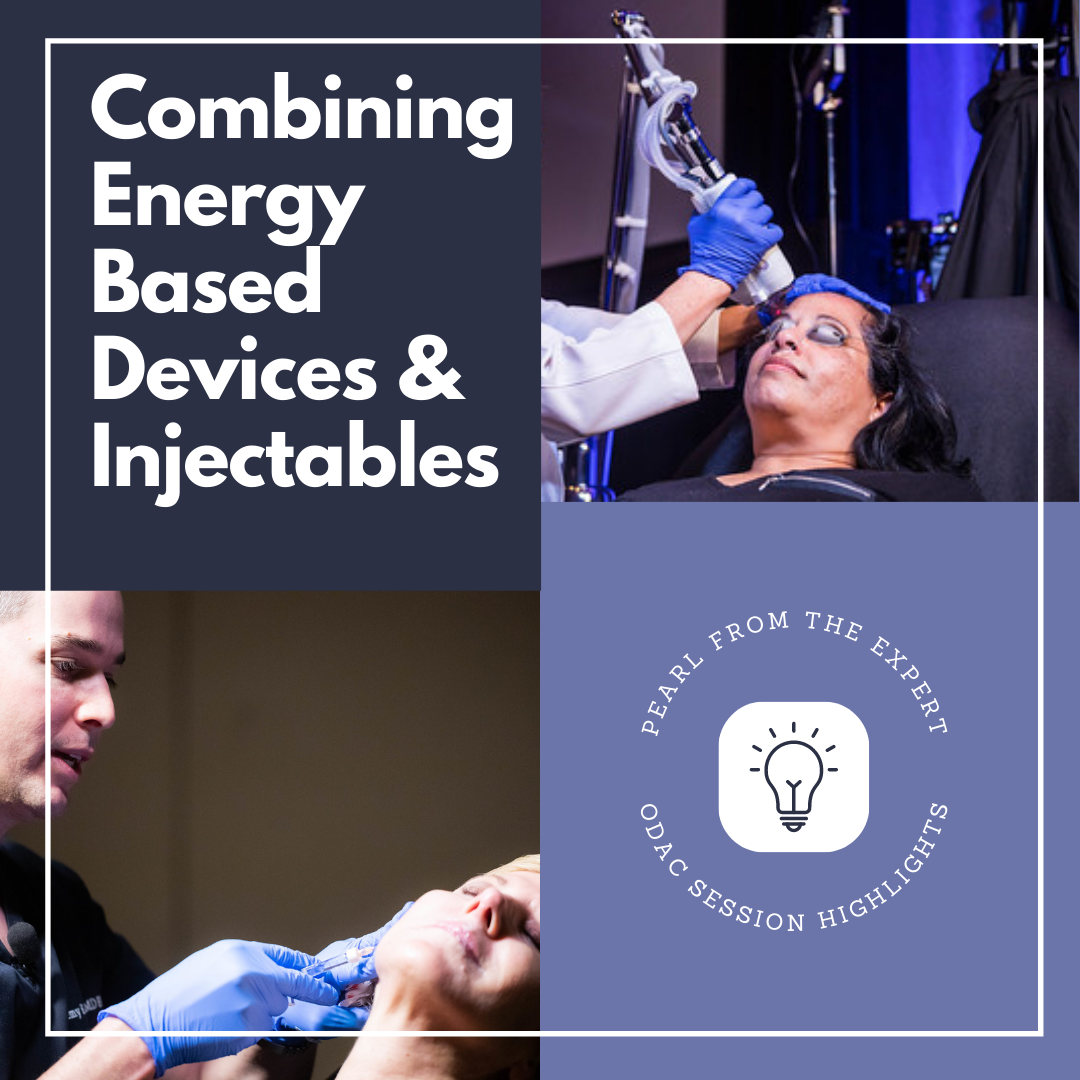As Dermatologists, we have a number of tools at hand to help patients achieve their aesthetic goals, and it is more often than not the proper combination of these treatments that distinguish Dermatologists from other providers in the cosmetic space. At the recent 2021 ODAC Dermatology, Aesthetic and Surgical Conference, board-certified and cosmetically-trained dermatologist Dr. Jeremy Green from Skin Associates of South Florida in Coral Gables provided a fast-paced and data-rich presentation regarding the safe and efficacious combination of energy-based devices and injectables in cosmetic therapy. Read on for some practical tips to help hone your cosmetic skills!
THINK IN THREE DIMENSIONS
Dr. Green emphasizes that, at the start, it is important to consider the depth at which each treatment modality will take place. Just as soft tissue fillers and neuromodulators can be placed at different planes within the skin and subcutis, energy-based devices will also affect these planes differently based on energy type and specific settings. Dermatologists are trained to approach the skin as a three-dimensional structure, and as such we can utilize this skill to ensure that each treatment option complements, rather than conflicts with, the other.
BEAT THE HEAT
As an initial example, Dr. Green discussed his treatment algorithm with regards to the use of energy-based devices and injectable biostimulators. The most commonly used injectable biostimulators, poly-L-lactic acid and calcium hydroxylapatite, are unique in their ability to induce de novo collagen formation in areas of injection, leading to more durable volume correction. However, it is unclear how these biostimulators are affected by the heat produced during energy-based treatments, and therefore Dr. Green prefers to perform the energy-based treatment before administering the injectable biostimulator. A caveat to this rule would be if the energy-based treatment is being performed at a different anatomic site or is known not to affect the tissue depth at which the injectable biostimulator is placed, in which case injection can be performed either before or after energy therapy.
KNOW YOUR DEPTH
To highlight the unique properties among energy-based devices and soft tissue fillers, Dr. Green cited a number of more recent studies that sought to histologically correlate the effects of combination treatment. A previous article in Dermatologic Surgery1 demonstrated that, using abdominoplasty specimens with hyaluronic acid filler placed at the intradermal plane, no light-based energy device (i.e., laser) was able to penetrate to the depth of the filler. However, radiofrequency microneedling devices were shown to penetrate and distort the filler. A separate study in Lasers in Surgery and Medicine2 used a rat model to histologically demonstrate that single-pass treatment with a picosecond-domain fractional laser over hyaluronic acid filler did not demonstrate disruption of the filler.
WHAT ABOUT THE TOX?
What about the combination of energy-based devices and botulinum toxin? Dr. Green notes that the soft tissue edema associated with any form of energy-based treatment could affect the diffusion or migration patterns of the toxin. Therefore, Dr. Green prefers to treat first with an energy-based device, wait to allow time for the soft tissue to cool, then treat with botulinum toxin. He cautions that soft tissue edema from energy-based treatments may be robust to the point that anatomic landmarks may become obscured, and in these cases it is best to defer botulinum toxin to a follow-on appointment.
References
1 Hsu SH, Chung HJ, Weiss RA. Dermatol Surg 2019 Apr;45(4):552-556
2 Kim JE, Hong JY, Lee HJ, Lee SY, Kim HJ. Lasers Surg Med 2020 Dec;52(10):928-34
This information was presented by Dr. Jeremy Green at the ODAC Conference held January 14-17, 2021. The above highlights from her lecture were written and compiled by Matthew Willett, MD.
Did you enjoy this article? Find more on Aesthetic Dermatology here.

